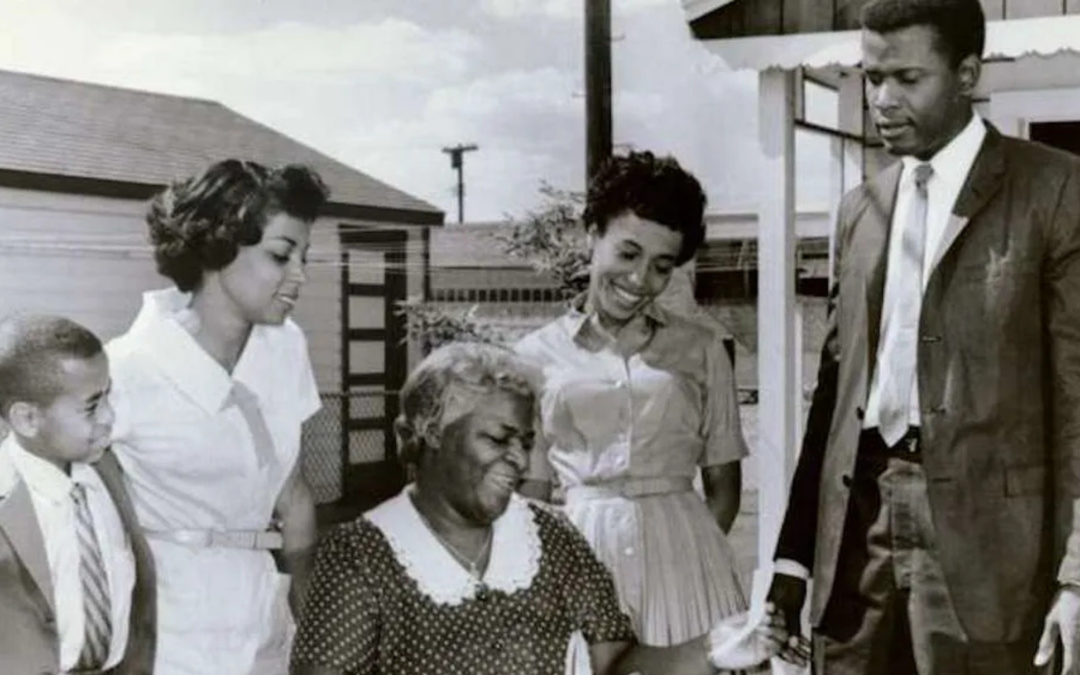A Raisin in the Sun—Society in Flux
This is the fourth installment in Mr. Campbell’s series: Homeschooling Through Black and White Film
When I was in high school, I always used to see posters for A Raisin in the Sun in the school’s drama room. The school library, too, had multiple copies of the script in the stage play section, along with other notable works of American theater such as Death of a Salesman and The Crucible. I never had the opportunity to read the play or see a performance. Still, it was ubiquitous enough for me to realize that it was a production of some importance in the history of American theater.
Those of you who follow this blog know I’ve been talking about the historical value of black and white movies. I therefore decided to go back and watch the 1961 film adaptation to see why the story was so enduring. Having watched the movie, I now see why the story has resonated so deeply. Today, I’ll talk a bit about A Raisin in the Sun and discuss its historical value.
The Story
A Raisin in the Sun began as a play by Lorraine Hansberry, which debuted to critical acclaim on Broadway in 1959. Depicting the struggles of an African American family in Chicago as they attempt to improve their financial situation, the play starred Sidney Poitier, Ruby Dee, Claudia McNeill, and John Fiedler (the original voice of Piglet from Disney’s Winnie the Pooh). The success of the play led to the production of a 1961 film of the same name, directed by Daniel Petrie, starring the original Broadway cast.
On the surface, A Raisin in the Sun is the story of the Younger family living in a crowded two-family apartment in a black neighborhood in South Chicago. Crammed in the little apartment are husband and wife Walter and Ruth Younger, their son Travis, sister Beneatha, and the matriarch of the family, Lena “Mama” Younger. When the story begins, the family is expecting a hefty life insurance payout from the recent death of the father, Mama’s late husband. The financial windfall gives rise to conflict within the family on how it should be spent. Walter hopes to invest the money in a liquor store, which he believes will solve the family’s financial difficulties. But Mama and Ruth want to use the money to buy a bigger house, while the sister, Beneatha (who is studying to be a doctor), hopes to pay for her college education.
Mama eventually decides to split up the money, making a down payment on a house in a white neighborhood in Clybourne Park while giving the rest to Walter, directing him to set some aside for his sister’s education and use the rest for his liquor store. Walter, however, puts all of the money into his liquor store plan, but is horrified to find that his business partner is a con man who runs off with the money.
Meanwhile, the white residents of Clybourne Park have realized that an African American family is moving into their neighborhood and sent a representative to the Youngers to discourage them from moving in, even offering to buy the house back from them at a profit. While the rest of the family is offended at the offer, Walter contemplates taking it in order to recoup his losses from the liquor store debacle. In the end, however, Walter refuses the money, and the film ends with the family preparing to move into the new home.
Historical Themes
In any story worth telling, there is the text and then the subtext. The text is what the story is about, but the subtext is what it’s really about. While on the surface, A Raisin in the Sun is about a black family’s financial struggles, there’s much more going on beneath the surface. Commentators have noticed many themes in this story, relating to race, identity, marriage, ambition, class consciousness, happiness, and human nature. But if I were to sum up the themes from a historical standpoint, I’d say the film centers on the transitionary nature of culture in the early 1960s—not just African American culture, but Western culture in general.
For example, take the generational divide between Mama and her children. Mama Younger was raised in the old South during the nadir of American race relations in the early 20th century. She fled to the North in the 1920s to escape Jim Crow and the constant threat of violence. A traditional black southern ethos about family, hard work, dignity, and the service of God shapes her entire moral outlook on the world. Her moral system is grounded in immutable truths that cannot be compromised or bought. Her children, however, have an entirely different mindset. Walter Younger is full of financial ambition and cares little for transcendent values. Raised in the hustle and bustle of blue-collar Chicago working as a chauffeur, his mind is entirely on acquisition.
MAMA: Son—how come you talk so much ’bout money?
WALTER: (With immense passion) Because it is life, Mama!
MAMA (Quietly): Oh—(Very quietly) So now it’s life. Money
is life. Once upon a time freedom used to be life—now
it’s money. I guess the world really do change …
WALTER: No—it was always money, Mama. We just didn’t
know about it
Meanwhile, her daughter, Beneatha, aspires to be a doctor, something the rest of the family routinely ridicules as unsuitable for a woman. Fired with feminist ideas about women’s rights, devoted to pan-Africanism, and openly atheist, she anticipates another potential trajectory for African Americans grounded in rejection of traditional values. It is clear that culture is at a crossroads. Mama opines on how society has (from her perspective) filled her children’s minds with new ideas:
No…something has changed. You something new, boy. In my time we was worried about not being lynched and getting to the North if we could and how to stay alive and still have a pinch of dignity too … Now here come you and Beneatha—talking ’bout things we ain’t never even thought about hardly, me and your daddy. You ain’t satisfied or proud of nothing we done. I mean that you had a home; that we kept you out of trouble till you was grown; that you don’t have to ride to work on the back of nobody’s streetcar—You my children—but how different we done become.
The transitionary nature of the story is highlighted by the film’s emphasis on the Younger family’s impending move from the lower-class, primarily black suburbs of southern Chicago into the quiet, middle-class white neighborhood of Clybourne Park. The move represents the burgeoning integration of America’s black population from black ghettos and urban areas into the white suburbs, a demographic shift that would characterize so much of the 1960s and 70s.
For Catholic pro-lifers, there is also an interesting subplot about abortion. When Ruth, Walter’s wife, finds out she is pregnant, she contemplates aborting the pregnancy rather than carrying the child to term in their crowded, run-down apartment. The debate over abortion exemplifies the contrast between the older ethos, reflected by Mama, who angrily opposes this course of action on principle (arguing “I thought we gave children life, not take it away from them”), and the daughter-in-law Ruth, whose attitude is much more pragmatic and calculating. In the end, Ruth decides to keep the child, but the debate highlights shifting attitudes towards abortion during the 1960s.
A Society in Flux
A Raisin in the Sun is more than just a tale of the Younger family’s struggles against poverty and racism; it’s a window into a world teetering on the edge of change. The early 1960s were a time when old values—rooted in survival, faith, and dignity—clashed with new ambitions for wealth and equality. Through Mama’s unyielding moral compass, Walter’s restless hunger for gain, Beneatha’s rejection of tradition, and Ruth’s pragmatic wrestling with tough choices, the story captures a society in flux.
Watching the film today, I’m struck by how it still speaks to us—not just as a piece of theater history I remembered from those high school posters, but as a story that forces us to ask: What do we hold onto, and what do we let go, when the world around us changes? That’s why A Raisin in the Sun endures, not just as a play or a film, but as a mirror for any era wrestling with its own growing pains.
What are your thoughts on this topic? I invite you to join me and other homeschoolers in the Homeschool Connections Facebook Group to continue this discussion. I would love to hear from you!






